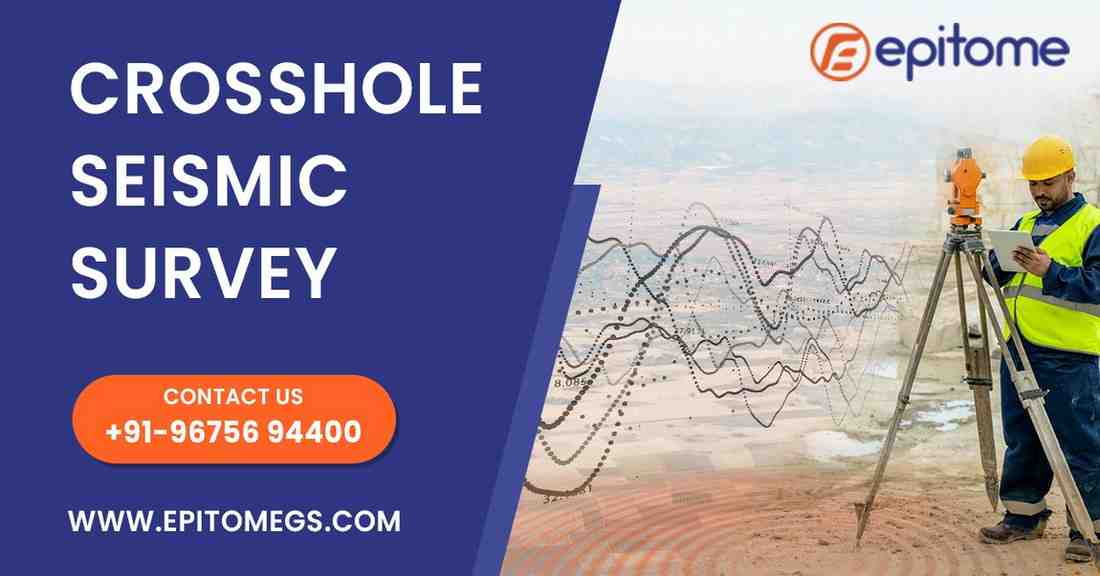


Discover how Crosshole Seismic Survey enhances subsurface characterization for infrastructure.
Crosshole Seismic Survey (CSS) is a geophysical testing method designed to measure the shear wave (S-wave) and compressional wave (P-wave) velocities of soil and rock strata. This method involves the generation of seismic waves in one borehole and their detection at known depths in adjacent boreholes. By analyzing the wave travel times between boreholes, engineers can determine critical subsurface properties.
At Epitome Geotechnical, we leverage state-of-the-art equipment and analytical software to provide reliable and comprehensive subsurface investigations. Our commitment to precision ensures that your project benefits from data you can trust.
High Accuracy: CSS provides precise measurements of wave velocities, making it superior to surface-based techniques.
Depth Profiling: Offers detailed insights into subsurface layers, especially useful for complex stratigraphy.
Non-Destructive: As a non-invasive method, it minimizes site disturbance.
Foundation Analysis: Essential for evaluating dynamic soil properties for seismic design, liquefaction assessment, and foundation studies.
Drilling Boreholes: Two or more boreholes are drilled to the required investigation depth.
Installation of Seismic Sources and Receivers: A seismic source is placed in one borehole, while receivers (geophones or hydrophones) are placed at corresponding depths in adjacent boreholes.
Data Acquisition: Seismic waves are generated and their arrival times at the receivers are recorded.
Data Analysis: Using advanced software, wave velocities are calculated and interpreted to determine soil and rock properties.
Infrastructure Development: Highways, bridges, and tunnels require reliable subsurface data to ensure structural stability.
Energy Sector: Power plants and pipelines benefit from CSS for foundation integrity and seismic hazard analysis.
Mining and Quarrying: Provides critical information for assessing rock quality and stability.
Urban Development: High-rise buildings and large infrastructure projects depend on precise subsurface characterization to meet stringent safety standards.
As the demand for precise subsurface characterization continues to grow, Crosshole Seismic Survey is expected to play an increasingly prominent role in various industries. Future trends may include:
Integration with AI and Big Data: Leveraging large datasets to enhance predictive models and improve interpretation accuracy.
Enhanced Visualization Tools: Development of augmented reality (AR) and virtual reality (VR) technologies for immersive geological modeling.
Eco-Friendly Survey Techniques: Innovations aimed at reducing environmental impact during field operations.
The Crosshole Seismic Survey is a powerful tool in the geotechnical engineer’s toolkit, providing invaluable insights for construction and infrastructure projects. Trust Epitome Geotechnical for thorough, accurate, and dependable geotechnical assessments.
